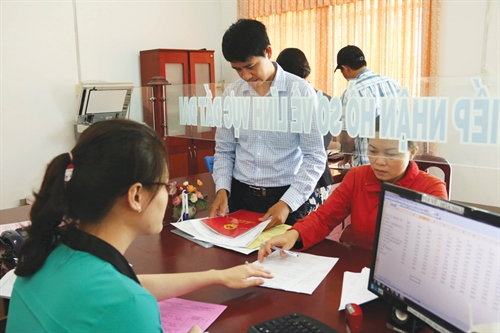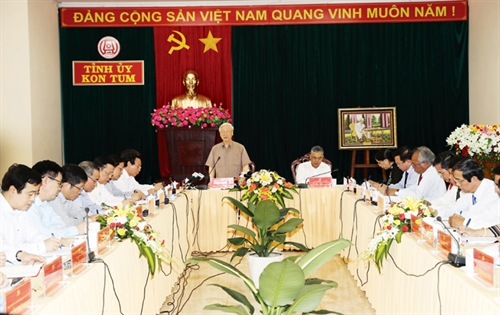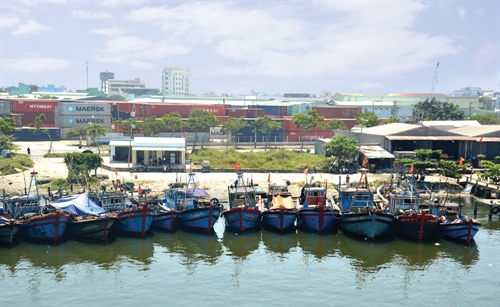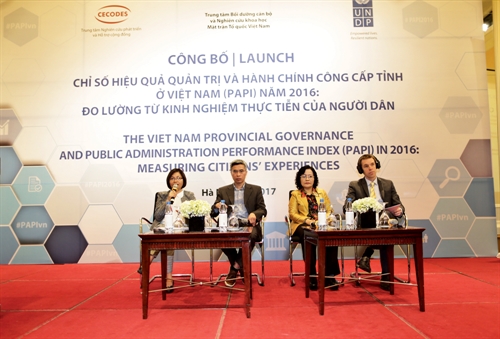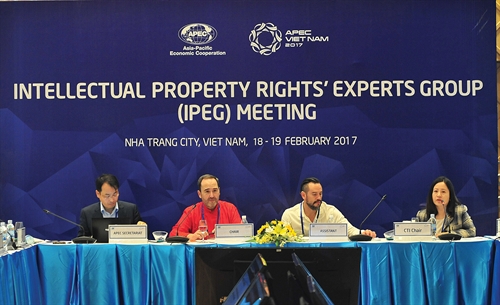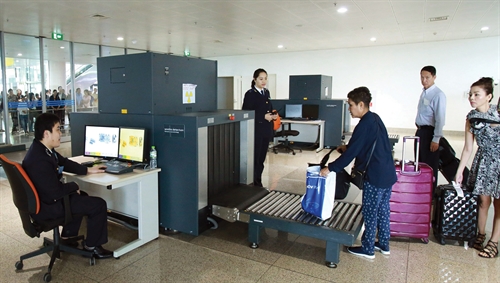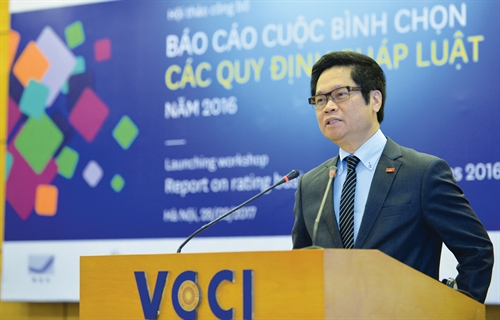Bui Duc Hien, Ph.D.
Institute of State and Law
Current agricultural production in Vietnam is characterized by slow growth rate and low productivity[1]. Despite the fact that Vietnam is now the second largest rice exporter in the world, its farmers’ lives have not been much improved and, as a result, many of them quit farming, leading to an increasing trend of abandoning rice fields and agricultural land in recent years[2]. This is attributable largely to shortcomings in the formulation and implementation of land policies and laws, especially those on land use planning; allocation, lease and recovery of agricultural land; quotas for use of agricultural land and acquisition of agricultural land use rights; change of agricultural land use purpose; grant of agricultural land use right certificates; and exercise of rights of agricultural land users.
Land use planning
According to current law, the system of land use master plans is divided into three levels, national, provincial and district[3]. In addition, there are master plans on use of defense and security land which are devised to ensure the efficient use of land for defense and security purposes.
Under the 2013 Land Law, land use master plans must conform with socio-economic development master plans. However, at present, Vietnam only formulates socio-economic development strategies with a maximum vision of 10 years. Besides, land use master plans are often drawn up following the office term-based approach.
Another problem is the existence of too many types of master plan, such as those on socio-economic development, land use, environment, biodiversity, transport, and urban development[4]. However, the formulation, approval and implementation of these master plans vary, thus causing overlaps and contradictions. Moreover, at present, a matter may be addressed by different master plans, for instance, forest land may be the subject of biodiversity master plan, environmental protection master plan as well as land use master plan. This situation makes the implementation of master plans difficult and costly.
According to current land law, agricultural land use quotas are regarded as part of land use master plans and plans, which serve as a basis for competent state bodies to consider land allocation, land lease, recognition of land use rights, permission for change of land use purpose, and land recovery. Although the law permits adjustment of land use master plans in a number of cases[5], reality shows that it is difficult to obtain permission for doing so, even impossible if such an adjustment is not proposed by competent authorities[6].
Allocation, lease and recovery of agricultural land
Under current law, the competence to allocate and lease agricultural land belongs to provincial- and district-level People’s Committees[7]. Commune-level People’s Committees are only competent to lease agricultural land serving public purposes. It is reasonable to empower local administrations to exercise the right to represent the all-people land ownership as it helps create favorable conditions for people to exercise land use rights. However, reality shows that the lack of mechanisms to inspect and oversee[8] activities of local administrations has led to their breaches of regulations on land allocation or lease and change of land use purpose[9].
Regarding allocation of agricultural land, at present, land may be allocated with or without collection of land use levy (Articles 54 and 55 of the 2013 Land Law)[10]. However, regulations on allocation of agricultural land applicable to overseas Vietnamese are different from those applied to domestic residents. While individuals and households in the country may be considered by the State for land allocation without collection of land use levy, overseas Vietnamese are not eligible for land allocation in such form. Instead, they are required to pay land use levy.
So, the question is whether this regulation contradicts the State’s policy of considering “overseas Vietnamese an inseparable part of the Vietnamese nation.”[11] Hence, the current land law should be properly revised. Clause 3, Article 3 of the 2008 Law on Vietnamese Citizenship defines overseas Vietnamese as Vietnamese citizens and persons of Vietnamese origin who permanently reside in foreign countries.” However, the law fails to clearly specify which particular period of time is considered “permanently residing” overseas. Additionally, the attachment of more importance to the amount of time living abroad than the element of nationality is unreasonable and causes disadvantages to involved subjects[12].
Agricultural land allocation and lease duration is another problem.
Under current legislation, agricultural land allocation and lease duration will be prescribed by the State, depending on land use purposes.
Accordingly, households or individuals directly involved in agricultural production will be allocated agricultural land for 50 years. Similarly, the duration for agricultural land lease to individuals, households and organizations for use for agricultural purposes must not exceed 50 years. As for those who invest in regions with difficult economic conditions or in fields with low capital recovery rate, the maximum lease duration may be extended to 70 years[13]. As for cases of allocating agricultural land to communities and allocating land under protection forests, special-use forests or production forests being natural forests, land will be allocated on a long-term and stable basis.
To us, legally, the setting of a specific duration for land allocation or lease largely demonstrates the State’s right to represent the all-people ownership over land. Though the 2013 Land Law extends the agricultural land allocation and lease duration from 20 years as prescribed in the 2003 Land Law to 50 years or even 70 years in a number of special cases, socio-psychologically, such a definite land use duration likely affects sustainable development as land users may reckon that they will run the risk of having their land recovered when the land allocation or lease duration expires. This discourages land users from making investment.
Until now, the Vietnamese State still sticks to the standpoint of not advocating re-distribution of agricultural land, which, to us, is reasonable as it helps ensure stability of land-related relations. However, if Vietnam wants to boost agricultural development, the country should consider permitting establishment of long-term land use rights.
Regarding land recovery by the State, under the land law, agricultural land may be recovered for defense or security purposes, for socio-economic development for national interests or public interests or in case land users violate the law or voluntarily return land to the State[14]. However, there have arisen several disputes related to recovery of agricultural land for implementation of housing development projects. The question that needs to be carefully considered here is whether or not the recovery of agricultural land for construction of new urban centers should be considered serving socio-economic development for national interests or public interests?
 |
| Tangerine plantations in Vinh Thoi commune, Lai Vung district, Dong Thap province__Photo: An Hieu/VNA |
Quotas for use and acquisition of the right to use agricultural land
Agricultural land use quotas are referred to in Article 129 of the 2013 Land Law, which range between 3 and 55 hectares per farmer or farming household depending on land use purpose. Land allocation quotas also vary across localities. For example, a farming household or a farmer in the southeastern region or Mekong River delta may be allocated at most 3 hectares of agricultural land for annual crop planting. A land user in delta regions may receive up to 15 hectares of land for perennial tree planting, while for those living in highland and mountainous areas, such quota is 55 hectares. The current land law’s provisions on agricultural land use quotas, like those on land allocation or lease duration, aim to demonstrate the State’s right to represent the all-people land ownership while creating equality among people in access to land.
Vietnam is an agricultural country with over 70 percent of the population currently living in rural areas and engaged in agricultural production. To meet the current regional and international integration requirements, the Vietnamese Party and State are stepping up large-scale agricultural production, shifting from household economy to farm economy with the establishment of agricultural joint-stock companies. To this end, the State should “untie” agricultural producers, facilitating their access to land resources through increasing agricultural land allocation quotas or abandoning the principle of equity in agricultural land allocation. In fact, not all rural households and persons are directly engaged in agricultural production and not all households and persons directly engaged in agricultural production wish to attach themselves to agricultural land for agricultural development. As a result, some are allocated agricultural land but do not carry out or neglect agricultural production, leaving their allocated land uncultivated while others cannot acquire land for production development. In our opinion, it is time to consider applying the mechanism of land allocation based on land use efficiency rather than the equity principle as at present.
With regard to acquisition of agricultural land use rights, according to the land law, the quota for acquisition of the rights to use agricultural land of a type must not exceed 10 times the land allocation quota applicable to land of such type. For instance, as the quota for allocation of annual crop land applicable to households and individuals directly using land in delta areas is 3 hectares, the quota for acquisition of the rights to use annual crop land is 30 ha.
Legal provisions on quotas for acquisition of agricultural land use rights aim to not only create land funds for the majority of people to be able to participate in relations concerning agricultural land use rights but also prevent the creation of new generations of landlords and “village tyrants”. However, in the era of integration when human rights and citizens’ rights are to be guaranteed, such worries prove to be groundless and even hinder national development. So, to us, land use rights acquisition quotas prescribed in Article 130 of the 2013 Land Law should be abolished with a view to encouraging large-scale and efficient investment in agriculture, contributing to the process of integration and sustainable economic development.
Agricultural land fragmentation constitutes another serious problem. At present, Vietnam is among countries with the lowest per-capita agricultural land area in the region and the world. The country’s figure is just 0.25 hectare, compared to the average figure of the region is 0.36 hectare and the whole world, 0.52 hectare. Meanwhile, it is estimated that land fragmentation gives rise to a waste of no less than 4 percent of land areas for fencing, border construction, and paths and roads[15]. It is not to mention that the situation where a farming household possesses several different land plots over a wide area reduces productivity and makes large-scale commodity production impossible.
To solve the situation, the State has adopted a policy allowing farmers to swap their land plots for the purpose of land consolidation. Although it is a proper policy, its outcomes remain below expectations due to the lack of a clear legal mechanism for implementation.
Change of agricultural land use purposes
Under the 2013 Land Law, change of land use purpose may be permitted by state agencies in the cases such as shifting from rice cultivation to annual non-rice crop farming or perennial tree planting, forestation, aquaculture or salt making, use of special-use forest, protection forest or production forest land for other agricultural purposes, or change from agricultural land to non-agricultural land[16]. Such regulations, on the one hand, help the State effectively manage agricultural land and, on the other hand, create favorable conditions for land users to change land use purposes without having to seek for permission from state bodies in certain cases such as changing annual crop land to paddy land, aquaculture land to annual crop land, or paddy land to land for annual non-rice crops.
However, reality shows that change of land use purpose is not simple at all. The land law says change of land use purpose must conform with approved land-use master plan and plans. The problem here is that doing in conformity with master plans does not always bring about high economic efficiency. In some cases, farmers use agricultural land for purposes other than those stated in master plans but such use brings about high yields[17]. To solve the problem, it is necessary to define and clearly distinguish agricultural production restructuring from change of land use purpose. If implementing this solution, the land management objectives will still be attained while farmers will be encouraged to make a fortune on their own land.
The use of agricultural land is closely related to food security. To ensure food security, Vietnam has so far considered protection and development of paddy land a top priority while imposing strict conditions on projects allowed to use rice cultivation land for other purposes[18]. With this policy, from a food shortage and hunger-stricken country, Vietnam has emerged as one of the top rice exporters in the world[19]. However, such policy seems to be no longer appropriate and needs to be re-shaped as Vietnamese farmers’ lives remain hard. Looking at regional countries like the Philippines and Indonesia, farmers there do not grow rice but have much better living conditions[20]. Hence, against the backdrop of climate change phenomena such as drought, storm, flood, inundation, sea level rise, and seawater intrusion, making rice farming more and more difficult, it is imperative to change the land policy and law to facilitate the restructuring of crops in particular and agricultural production in general.
 |
| Tangerine plantations in Vinh Thoi commune, Lai Vung district, Dong Thap province__Photo: An Hieu/VNA |
Grant of agricultural land use right certificates
Under the current law, agricultural land is allocated to households and individuals. However, as the 2015 Civil Code, which came into force on January 1 this year, no longer recognizes households as legal entities, the grant of land use certificates to households becomes a legal issue that needs to be properly addressed. Besides, there exist problems in the course of exercising land users’ rights in case land use rights certificates are granted to households. For example, under the land law, the transfer of land use rights must be consented by all family members aged full 15 years or older. However, given that family members do not always reside together in the same place, such requirement can hardly be fulfilled. We suggest that, to ensure land users’ interests, the State adjust the regulations on grant of land use right certificates toward granting a certificate to each family member corresponding to the land area he is entitled to get.
Exercise of rights of land users
As per current land law, households and individuals living in the same commune may swap agricultural land plots among themselves. This provision creates the legal basis for implementation of the land consolidation policy, helping boost commodity production. Yet, the restriction of agricultural land exchange within a commune affects the process of expanding the agricultural economy from household scale to farm scale.
Legal provisions on donation of agricultural land, especially paddy land, seem to be very strict. Accordingly, paddy land may be donated only to households or individuals directly engaged in agricultural production. This provision aims to ensure continuous use of paddy land for proper purposes. However, it hinders agricultural production as it prevents financially capable entities to acquire land for agricultural production from those who have quitted farming or are incapable of further developing production.-
